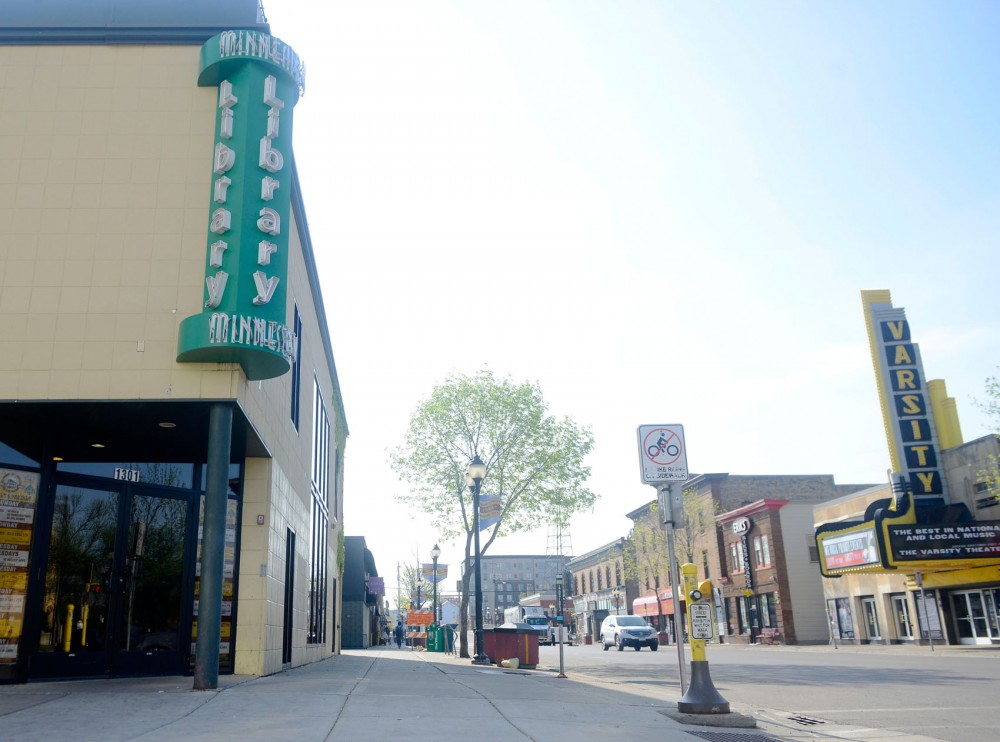Jason McLean said he doesn’t think much of Dinkytown’s historic quality.
While area shop owners and community members have spent more than a year fighting for a historic designation, others like McLean are not yet convinced area buildings should be preserved.
“I think there’s a confusion between nostalgia and history,” McLean said, who’s the owner of the Loring Pasta Bar and Varsity Theater.
The Heritage Preservation Commission released a study last month that said the four-block core of the Dinkytown business district meets most of the criteria to receive a historic designation. The classification would impose a set of guidelines that some area business owners are concerned would limit their renovating abilities.
Dinkytown Rentals owner Tim Harmsen said he’s concerned the designation will prevent him from making changes to a house he owns that’s more than a century old. He said he doesn’t think the house adequately represents Dinkytown’s character, and therefore shouldn’t be included in the historic designation.
The house in the Marcy-Holmes neighborhood is one of 35 properties that would be included in the historic district.
Right now, property owners in the area have to receive approval from the commission before making changes to their buildings. If the area receives a permanent historic status, the approval process would continue.
After an area receives a historic designation, city officials create a set of restrictions for future development and renovation, which are decided based on factors that contribute to the area’s remarkable features.
Though guidelines for the Dinkytown district haven’t been determined yet, City Planner Haila Maze said they will be decided based on the neighborhood’s most important architecture elements and historical events.
“Ideally, [the guidelines are] creating a place that has a distinct character and feel that [some] people really value,” Maze said.
Maze said members of the commission will use the recently released study to help them decide which guidelines should be implemented.
Some characteristics of the small business district that define its significance include its commercial storefronts, most of which date back to the early 1900s, and the area’s ties to the University community, according to the report.
“The history of [a historic district] is really about the place rather than about a particular era of architecture,” Maze said.
Preserve Historic Dinkytown project coordinator and Book House owner Kristen Eide-Tollefson said if imposed, the guidelines should be flexible so changes are still encouraged.
“We think it’s really important that those guidelines [encourage] creative use of the existing buildings and not just try to stop things in time and place,” Eide-Tollefson said.
But Maze said it can be difficult to determine which elements of buildings represent Dinkytown’s history.
Dinkytown Wine and Spirits owner Irv Hershkovitz said building renovation is already significantly more expensive than starting fresh with construction. He also said by implementing guidelines for renovating buildings, new developers and landlords may be less likely to target the area.
“It’s already a very high rent area. But if a landlord has to put three [or] four times as much [money] into fixing a door, it’s only going to drive the rents up,” he said.
Dick Gilyard, a Prospect Park East River Road Improvement Association board member, said when the neighborhood association was considering to push for the area to become a historic district in 2008, he thought the city’s proposed guidelines were too restrictive.
Others felt the same way, so the Prospect Park neighborhood ultimately didn’t pursue the status.
“We [wanted] to protect dominant characteristics of particular properties and [the] overall character of the area, but we didn’t want to prohibit innovation [and] creativity,” Gilyard said. “We didn’t want to just stop the process that had made this area so rich.”
















